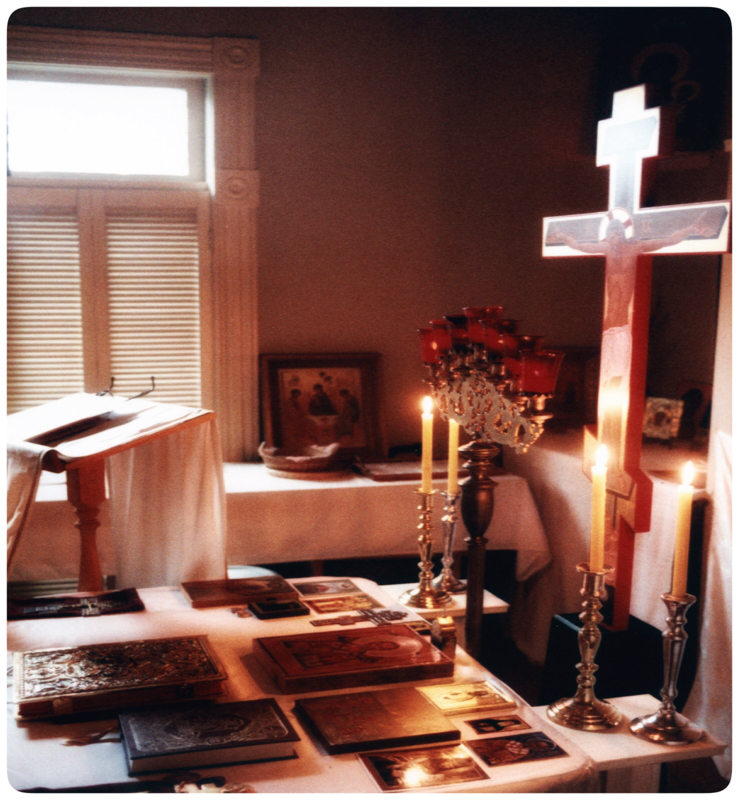Photo of the Altar, in St. Sophia’s original Mission House Church. Services began there in September of 1991 and continued for 10 years, until the parish could purchase a building and move location of worship. Reminiscent of St. Paul’s dear friends and helpers in Christ, Sts. Priscilla and Aquila who had a church in their house… our priest and his matushka’s home was used as a church, and the dining room was set aside as a permanent Altar area, and kept completely separate as such, for a decade.
The entire Liturgical Church Year is a treasury of spiritual wisdom and blessings.
In this busy month of September, there are two Great Feasts, the Nativity of the Theotokos (Sept. 21/8) and the Exaltation of the Holy Cross (Sept. 27/14).
There are also other holy days during this month, such as the Beginning of the Church Liturgical New Year on September 14/1.
The first day of the Church’s Liturgical New Year is called the Beginning of the Indiction. It occurs in September for both Scriptural and historical reasons.
The Scriptural reason is that God, through Moses, ordained the Old Testament Church to celebrate the New Year at the time of the harvest in the seventh month, that is, September – actually the seventh month according to ancient Hebrew reckoning.
Tradition says the Hebrews entered the Promised Land in September. The Holy Scriptures (Leviticus 23:24-25 and Numbers 29:1-2) confirm the people of Israel celebrating the feast of the Blowing of Trumpets on this day, with the offering of hymns and thanksgiving.
The historical reason is the Roman-Byzantine Emperors and the Eastern Patriarchs of the New Testament Church also decreed the New Year should be in September. According to Holy Tradition, Christ entered the synagogue on September 1/14 to announce His mission to mankind (St. Luke 4:16-22). He was given the book of the Prophet Isaiah to read. He opened it and proclaimed, “The spirit of the Lord is upon me; because He has anointed me to preach the gospel to the poor; He has sent me to proclaim release to captives, and recovering of sight to the blind, to set at liberty those who are oppressed, to proclaim the acceptable year of the Lord…” (Isaiah 61:1-2 )
The Church continues to keep the spiritual significance of the Liturgical New Year, with prayers asking God to grant temperate weather, seasonable rains, and abundance of the fruits of the earth. We are reminded that time is a precious gift.
Let us re-examine our priorities and offer unto the Lord, a New Year… in which we put Him first!


